Ever wondered what it feels like to stand on top of the world with nothing but clouds beneath your feet? Nepal's legendary mountaineering expeditions aren't just bucket-list adventures—they're life-altering journeys that redefine what you believe is possible.
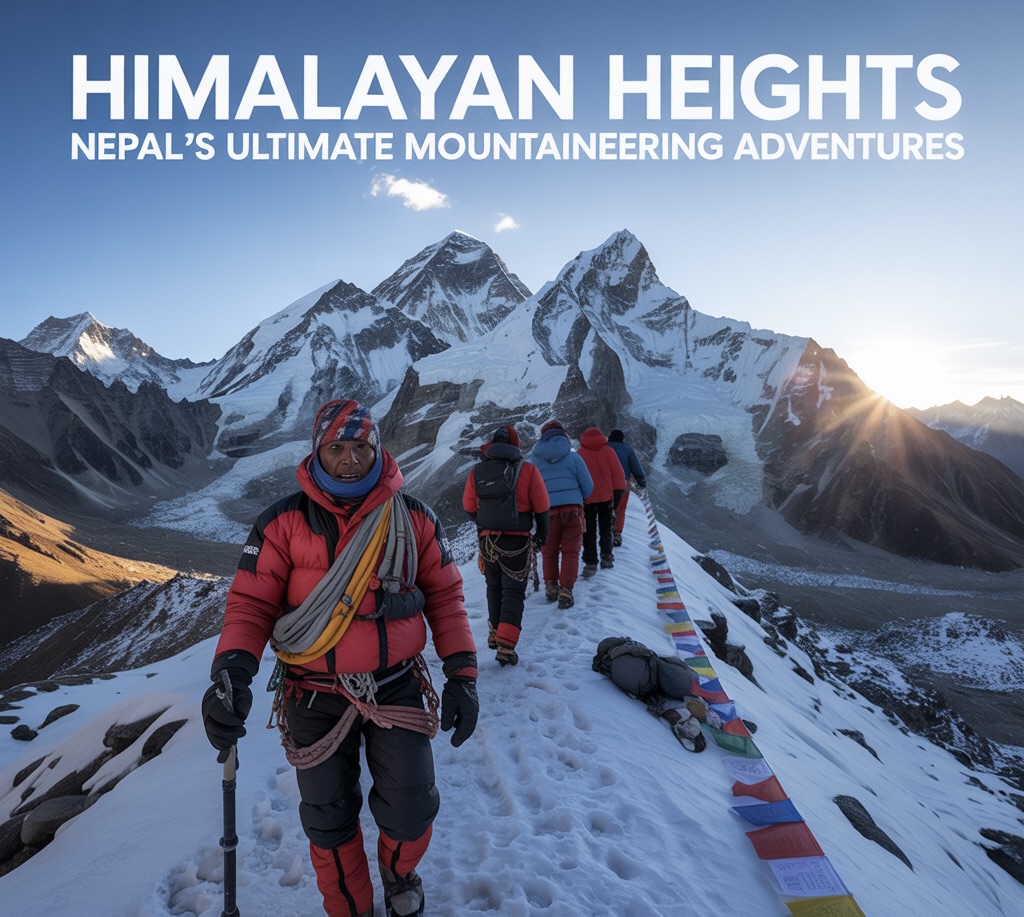
From the iconic Everest to the technical challenges of Annapurna, Nepal offers more than just mountains to climb. It delivers stories you'll tell for decades, friendships forged in thin air, and the quiet pride that comes from pushing beyond your limits.
The Himalayan kingdom hosts 8 of the world's 14 highest peaks, with experienced Sherpa guides whose mountaineering knowledge has been passed down through generations.
But what separates a successful expedition from a failed attempt isn't just physical preparation—it's something far more surprising that most climbers overlook entirely.
About Everest Sherpa Expeditions Pvt. Ltd.
Our History and Mountain Heritage
Born in the shadows of the Himalayas, we've breathed mountain air our entire lives. Everest Sherpa Expeditions started in 2005 when a group of experienced Sherpas decided climbers deserved better than the cookie-cutter expedition companies flooding the market.
Our roots run deep in these mountains. Many of our founders come from families with generations of climbing history—grandparents who helped early explorers navigate these peaks before modern equipment existed. This isn't just business for us; it's our heritage.
Over the past 18 years, we've guided more than 500 successful expeditions across Nepal's major peaks. Through snowstorms, political changes, and even the devastating 2015 earthquake, we've remained committed to sharing our mountains responsibly.
Experienced Team of Local Sherpas
Our team isn't assembled from random climbing enthusiasts. Every guide has summited multiple 8000m peaks—most have reached Everest's summit at least five times. But technical skill is just the beginning.
What separates our guides is their deep connection to these mountains. They know which routes become dangerous in afternoon sun, which weather patterns signal approaching storms, and which camps offer the best protection from unexpected winds.
We're proud that 90% of our team comes from local Sherpa communities. This means your money supports families who have called these mountains home for centuries. It also means you benefit from knowledge passed down through generations—insights no climbing manual can teach.
Safety Standards and Success Rates
Mountains don't care about your experience level. That's why we obsess over safety.
Our equipment exceeds international standards, with redundant systems for critical gear. We maintain a 2:1 client-to-guide ratio on challenging routes—well above industry averages. Each expedition carries satellite communication devices, comprehensive medical kits, and supplemental oxygen systems that undergo rigorous testing.
This focus on safety hasn't compromised our success. We maintain an 85% summit success rate on Everest expeditions—significantly higher than the industry average of approximately 60%. More importantly, our client injury rate remains below 2%, compared to the regional average of 8%.
Our Unique Approach to Mountain Expeditions
We don't do assembly-line mountaineering. Before you even arrive in Nepal, we've already learned about your experience, fitness level, and personal goals through detailed consultations.
Once here, we take time for proper acclimatization. While other companies rush to meet tight schedules, we build flexible itineraries that respond to both mountain conditions and your adaptation pace.
Our food doesn't come from packets. We bring fresh ingredients to surprisingly high elevations, because proper nutrition directly impacts performance at altitude.
Beyond climbing, we introduce you to local culture. You'll share meals with Sherpa families, participate in monastery blessing ceremonies, and understand the spiritual significance these mountains hold for local communities.
This isn't just about reaching summits—it's about experiencing mountains the way we do: with respect, knowledge, and joy that comes from being exactly where you belong.
Popular Mountaineering Peaks in Nepal
Everest (8,848m) - The Ultimate Challenge
Standing tall at 8,848 meters, Mount Everest remains the crown jewel of mountaineering. We've guided countless expeditions to this majestic peak since our establishment. The journey typically takes about 60 days from Kathmandu to the summit and back, following either the Southeast Ridge (Nepal) or North Ridge (Tibet) routes.
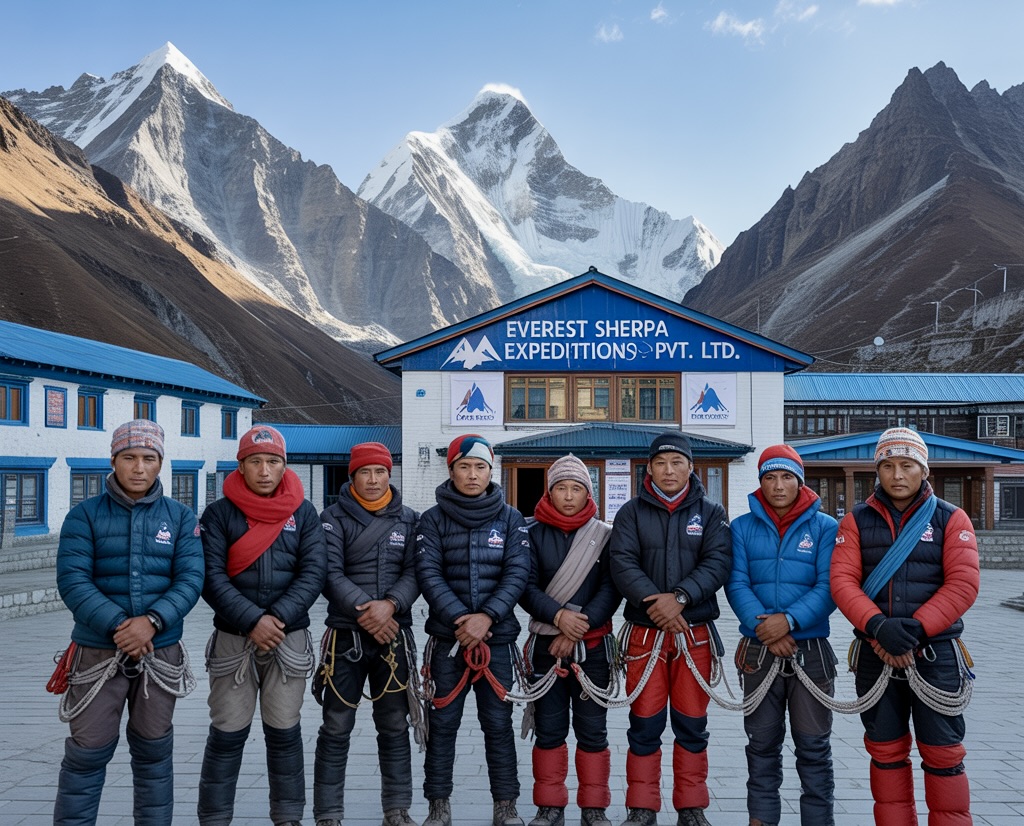
What makes Everest special isn't just its height - it's the journey. The breathtaking Khumbu Icefall, the Western Cwm, and finally the Hillary Step create an unforgettable adventure. Our Sherpa guides know every inch of this mountain, with many having summited over 15 times.
Spring (April-May) offers the best climbing window, when jet streams temporarily move away from the peak. Fall expeditions are possible but face harsher conditions.
Annapurna (8,091m) - Technical and Dangerous
Annapurna holds a deadly reputation with the highest fatality-to-summit ratio among 8000ers. We approach this mountain with immense respect. Its technical sections include steep ice walls and areas prone to avalanches.
Our expeditions tackle the North Face route when conditions allow. Despite its dangers, the stunning beauty of the Annapurna Sanctuary makes this expedition truly special. We ensure extra safety measures, including extensive acclimatization and weather monitoring.
Lhotse (8,516m) - The Connected Giant
Sharing much of its route with Everest, Lhotse offers a fascinating alternative to climbers seeking something different. We particularly love guiding expeditions here because of the stunning Lhotse Face - a challenging 1,200m wall of ice at a 40-50° angle.
The most rewarding part? The final climb up the Lhotse Couloir to reach the summit. Our teams typically climb Lhotse during the same season as Everest, with many climbers actually using it as acclimatization for Everest attempts.
Makalu (8,485m) - The Fifth Highest
Makalu's distinctive pyramid shape presents unique challenges. We've been organizing expeditions here for decades, navigating its technical sections, including the notorious Makalu La saddle.
Unlike more commercial peaks, Makalu offers solitude. Our expeditions typically see far fewer climbers than on Everest or Cho Oyu. The approach through the lush Barun Valley showcases Nepal's biodiversity before entering the high-altitude wilderness.
Cho Oyu (8,188m) - The Beginner's 8000er
Don't let the "beginner" label fool you - Cho Oyu is still a serious undertaking. We recommend this mountain for climbers looking to attempt their first 8000er due to its relatively straightforward route and lower technical difficulty.
The Tibet-side approach offers spectacular views of the Himalayan range. Our expeditions typically take 35-40 days, with success rates significantly higher than other 8000ers. This mountain serves as a perfect training ground before tackling more challenging peaks like Everest or K2.
Expedition Seasons and Weather Windows
Pre-Monsoon (Spring) Season Benefits
Spring in Nepal (March to May) is when we see the most expedition activity on our mountains. The weather patterns become more predictable, offering longer stretches of clear skies. Temperatures gradually warm, making high-altitude camping more bearable - though let's be honest, it's never truly "comfortable" above 6,000m!
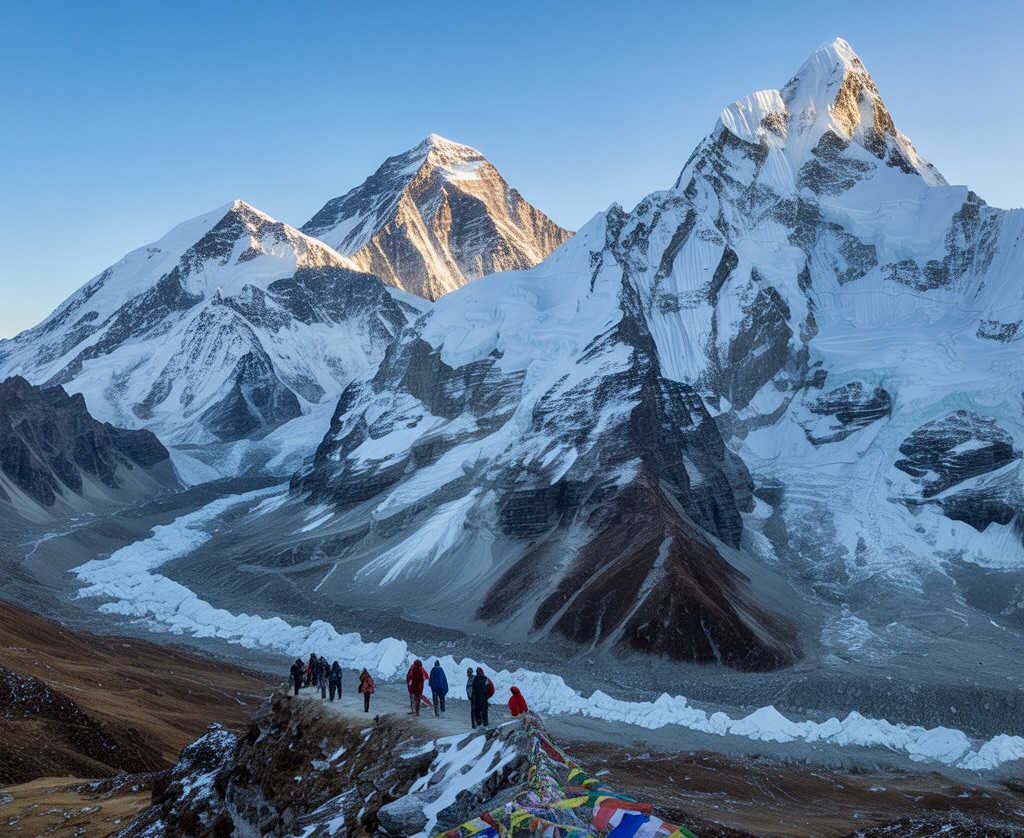
We've guided countless climbs during this season and can confirm that April and early May provide the most reliable summit windows. The frozen winter snowpack begins stabilizing, reducing avalanche risk on many routes. Pre-monsoon climbing also treats you to spectacular rhododendron blooms in the lower valleys - a colorful reward after summit success.
Post-Monsoon (Autumn) Climbing Conditions
After the monsoon rains wash out summer climbing, autumn (September to November) emerges as our second-favorite expedition season. The air clarity is simply unmatched - crystal clear views extend for hundreds of miles on good days. Many of our veteran Sherpas prefer autumn climbs for the stable snow conditions.
The post-monsoon period typically offers fewer crowds than spring, meaning more flexibility with permits and accommodations. Temperatures run slightly colder than spring, but the dry air makes it feel surprisingly comfortable. We've found summit success rates nearly match spring percentages, especially on 7,000m peaks.
Winter Expeditions for the Extreme Adventurer
Winter expeditions aren't for the faint-hearted. We've guided these challenging climbs from December through February, and they demand absolute commitment. The positives? Virtually empty mountains and bragging rights few can claim.
The challenges are significant: temperatures can plummet below -40°C, daylight hours shorten dramatically, and winds frequently exceed 100km/h at higher elevations. Our winter expeditions require specialized equipment beyond standard climbing gear, including expedition-grade down suits and enhanced shelter systems.
Only the most experienced mountaineers should consider winter ascents. We require additional training and screening for these expeditions, but the raw, untamed mountain experience simply can't be matched in other seasons.
Preparation for Nepal Mountaineering
Physical Training Requirements
Climbing mountains in Nepal isn't a walk in the park. We've seen too many eager climbers arrive at base camp unprepared for what's ahead. Start your training at least 4-6 months before your expedition.

We focus on three key areas with our clients:
- Cardiovascular endurance - We recommend 3-4 sessions weekly of running, hiking, or cycling for 45-60 minutes. Gradually increase duration and intensity.
- Strength training - Our climbers need strong legs and core. Squats, lunges, and step-ups mimic climbing movements. Aim for 2-3 strength sessions weekly.
- Load carrying practice - Nothing prepares you like hiking with weight. Start with 15-20 pounds and work up to 30-40 pounds over several hours.
Technical Skills Assessment
The mountains don't forgive skill gaps. We assess all our climbers' abilities before heading to higher peaks.
At minimum, we expect our climbers to be comfortable with:
- Using crampons on steep ice
- Rope techniques (fixed line travel, rappelling)
- Self-arrest with an ice axe
- Crevasse rescue basics
- Proper use of climbing harness and hardware
For peaks above 6,500m, we require previous high-altitude experience. Not sure where you stand? We offer pre-expedition training courses in Kathmandu.
Essential Gear and Equipment
Bringing the right gear can make the difference between summit success and failure. We've refined our gear lists through decades of expedition experience.
Must-have technical equipment:
- Climbing harness, helmet, and carabiners
- Crampons compatible with your mountaineering boots
- Ice axe appropriate for your target peak
- Ascender and descender devices
- Insulated mountaineering boots (double or triple, depending on altitude)
Clothing layers matter tremendously:
- Moisture-wicking base layers
- Insulating mid-layers (fleece and down)
- Waterproof/windproof outer shell
- Expedition down suit for 7000m+ peaks
- Proper glove system with liners and shells
Don't skimp on sleeping gear! A -20°C to -40°C sleeping bag keeps you alive at high camps.
Altitude Acclimatization Strategies
We've learned the hard way that rushing acclimatization leads to disaster. Our tried-and-tested approach follows the "climb high, sleep low" principle.
Our typical acclimatization schedule:
- Spend 2-3 days at base camp (4,500-5,500m)
- Make a push to Camp 1, return to base camp
- Rest day at base camp
- Move to Camp 1, sleep there
- Touch Camp 2, return to Camp 1
- Return to base camp for recovery
We monitor everyone for altitude sickness symptoms and never hesitate to descend if needed. Medication like Diamox can help, but it's not a substitute for proper acclimatization.
Pre-expedition, we recommend spending time at moderate altitudes (2,500-3,500m) if possible. The Annapurna Circuit or Everest Base Camp trek make excellent preparation.
Permit and Logistics Management
Understanding Climbing Permits and Costs
Navigating the permit system for mountaineering in Nepal can be tricky, but we've got you covered. At Everest Sherpa Expeditions, we handle all the paperwork so you can focus on your climb.
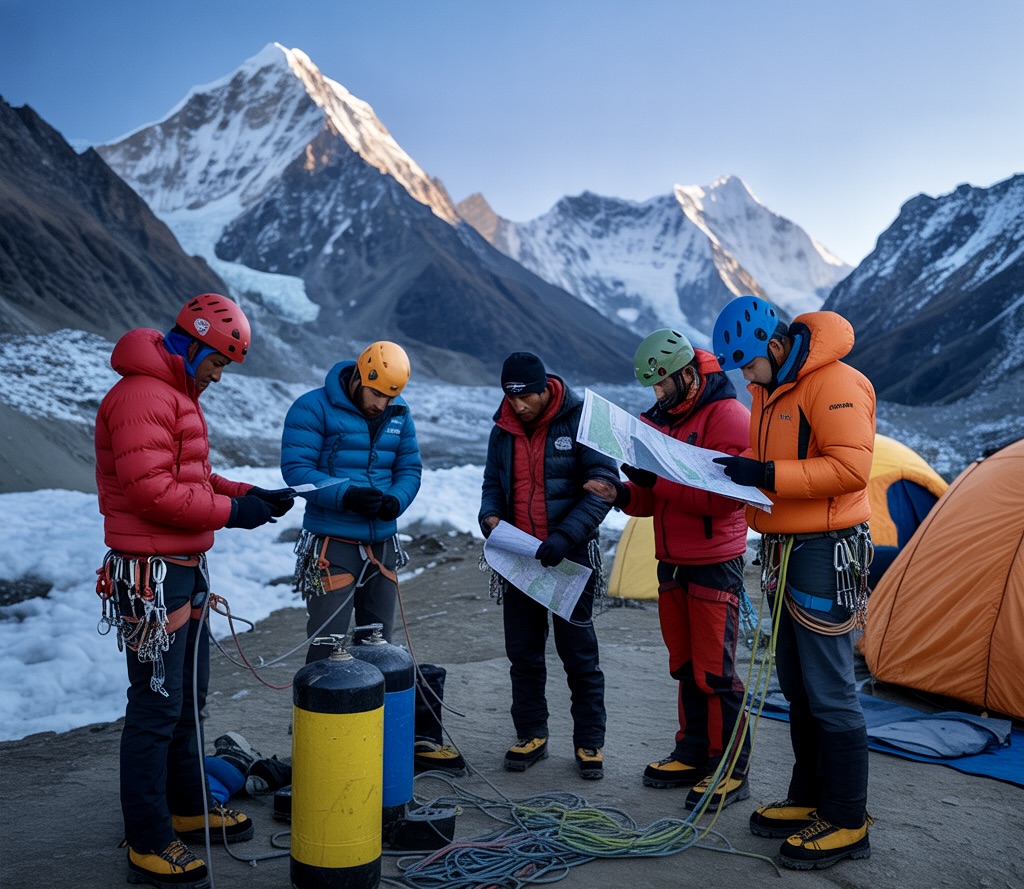
For popular peaks like Everest, permits cost $11,000 per climber during spring (March-May). Autumn expeditions (September-November) come at a slightly reduced rate. Lesser-known peaks start from $250-$500, making them perfect for climbers on a budget.
Here's what your permit fees typically include:
|
Peak |
Spring Fee |
Autumn Fee |
Winter/Summer Fee |
|
Everest |
$11,000 |
$5,500 |
$2,750 |
|
Annapurna |
$1,800 |
$1,800 |
$1,000 |
|
Manaslu |
$1,800 |
$1,800 |
$1,000 |
|
Amadablam |
$800 |
$800 |
$400 |
We also arrange your Sagarmatha National Park entry permits ($25) and Khumbu Pasang Lhamu Rural Municipality fees ($15). Our team stays updated on regulation changes, saving you from unexpected costs or bureaucratic headaches.
Base Camp Setup and Facilities
Our base camps aren't just places to sleep—they're your home away from home. We set up spacious personal tents with comfortable mattresses and quality sleeping bags rated for extreme conditions.
The heart of our base camp is our communal dining tent equipped with tables, chairs, and heating systems. Here you'll enjoy nutritious meals prepared by our experienced high-altitude chefs who create varied menus featuring both Nepali and Western cuisine.
Our facilities include:
- Private toilet tents
- Hot shower facilities
- Solar charging stations for your devices
- Medical tent with oxygen supplies and first aid equipment
- Communication center with internet connectivity
We establish our base camps in strategic locations that balance safety with convenience, ensuring stable ground away from avalanche paths while maintaining reasonable access to climbing routes.
High Camp Logistics
Moving supplies up the mountain is an art we've mastered over the decades. We establish several high camps depending on the mountain and route, each stocked with essential gear, food, and emergency supplies.
Our Sherpa team pre-places oxygen bottles, cooking equipment, and emergency gear at strategic points to minimize what you need to carry. We maintain a careful inventory system to ensure nothing runs short when you're at higher elevations.
Oxygen management is critical above 7,000 meters. We only use certified oxygen systems from trusted manufacturers, with backup regulators and masks for every climber. Each client typically receives 4-7 oxygen bottles for summit attempts on 8000m peaks, depending on individual needs and climbing style.
Our high camp tents are specialized high-altitude models designed to withstand extreme winds. We secure them with additional anchoring systems and ice screws for your safety.
Communication Systems on the Mountain
Staying connected in remote Himalayan regions is no small feat, but we've developed reliable systems over the years of expeditions. Our communication setup includes:
- Base camp satellite internet
- VHF/UHF radio network connecting all camps
- Satellite phones for emergency backup
- InReach or similar GPS trackers for each climbing team
Each guide and climbing group receives dedicated radio frequencies, ensuring clear communication throughout your expedition. Our base camp manager monitors communications 24/7 during critical climbing periods.
We provide daily weather forecasts from multiple international meteorological services, giving you the most accurate information for summit decisions. Many climbers also appreciate our satellite phone rental service for personal calls to family.
Rescue and Evacuation Protocols
The mountains are unpredictable, so we prepare for every scenario. Our comprehensive rescue protocol includes:
- Dedicated rescue Sherpas are stationed at strategic points during summit pushes
- Emergency oxygen caches are placed along the route
- Stretchers and evacuation equipment are at each camp
- Helicopter evacuation coordination (weather permitting)
We maintain emergency funds to initiate immediate rescue operations without waiting for insurance approval. Our team includes members certified in high-altitude rescue techniques and wilderness first aid.
We've established relationships with helicopter companies specializing in high-altitude evacuations. While helicopter rescues have limitations (they typically can't operate above 6,500 meters or in poor weather), we've coordinated some of the highest helicopter evacuations in Himalayan history.
All clients are required to obtain comprehensive rescue insurance. We'll help you select appropriate coverage and understand policy details before your expedition begins.
Cultural Experiences During Expeditions
Sherpa Traditions and Mountain Ceremonies
When climbing in Nepal, we're not just conquering peaks – we're participating in rich cultural traditions that have guided mountaineering for centuries. Before setting foot on any mountain, we always perform a Puja ceremony with our Sherpa guides. This sacred ritual asks the mountain deities for safe passage and forgiveness for stepping on their domain.
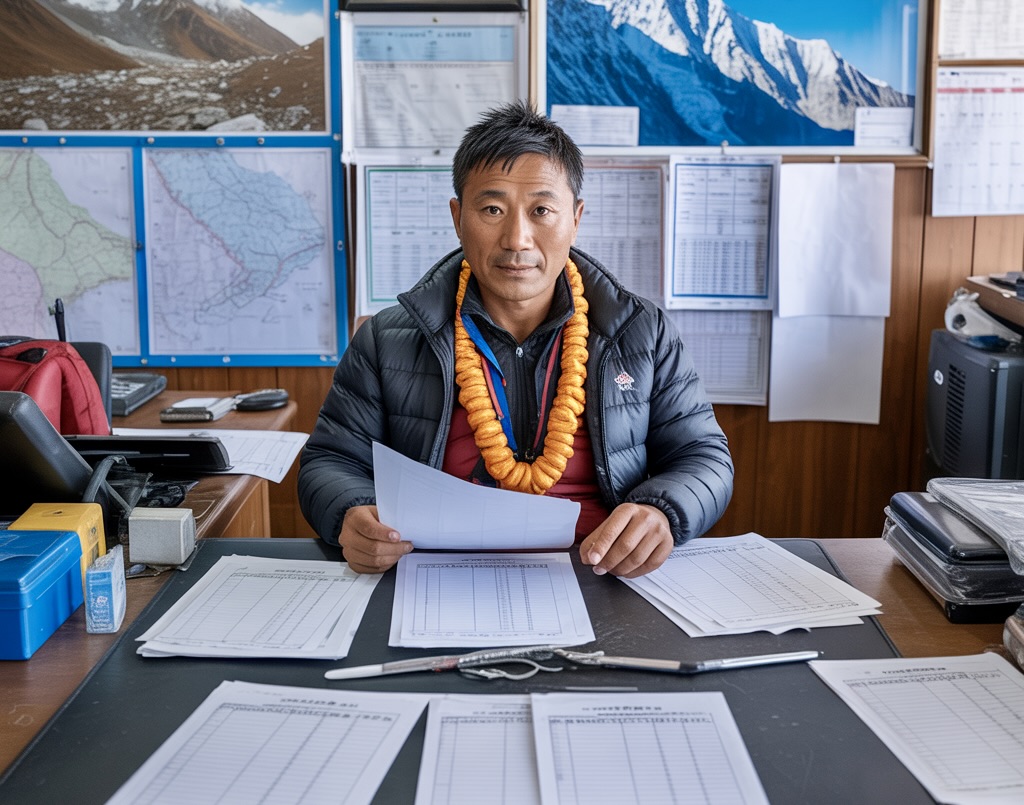
During the ceremony, we erect prayer flags that carry blessings to the heavens with each flutter in the wind. Our Sherpa team burns juniper branches while chanting prayers, creating a mystical atmosphere even at the highest base camps. We've seen even the most science-minded climbers grow quiet with respect during these powerful ceremonies.
Local Village Interactions
The magic of Nepal isn't just on the mountains – it's in the villages we pass through. We make it a point to spend time in local teahouses, where our clients can share butter tea with village elders and learn about life in the Himalayas.
In places like Namche Bazaar and Khumjung, we introduce our climbers to local families who often invite us into their homes. These aren't staged tourist experiences – they're genuine connections. Our groups regularly join in community celebrations, from harvest festivals to Buddhist holidays. The smiles and hospitality we encounter remind us why we fell in love with Nepal in the first place.
Respecting Sacred Mountains
We believe that successful expeditions begin with respect. Many mountains in Nepal aren't just geographical features – they're deities in the local Buddhist and Hindu traditions.
Before ascending peaks like Machhapuchhre (considered so sacred it remains unclimbed) or Chomolungma (Everest), we educate our clients about appropriate behaviors. This means no shouting on the mountain, leaving no trace, and understanding which peaks have special significance.
Our Sherpa guides teach climbers about the concept of "nyingje" (compassion) toward the mountain. We've found that climbers who embrace these cultural perspectives often have more meaningful experiences than those focused solely on summiting.
Sustainable and Responsible Mountaineering
Environmental Conservation Practices
We've seen firsthand how mountain ecosystems are fragile and deserving of our protection. At Everest Sherpa Expeditions, we implement strict Leave No Trace principles on all our climbs. Our guides are trained in minimizing environmental impact, from proper campsite selection to responsible waste disposal.
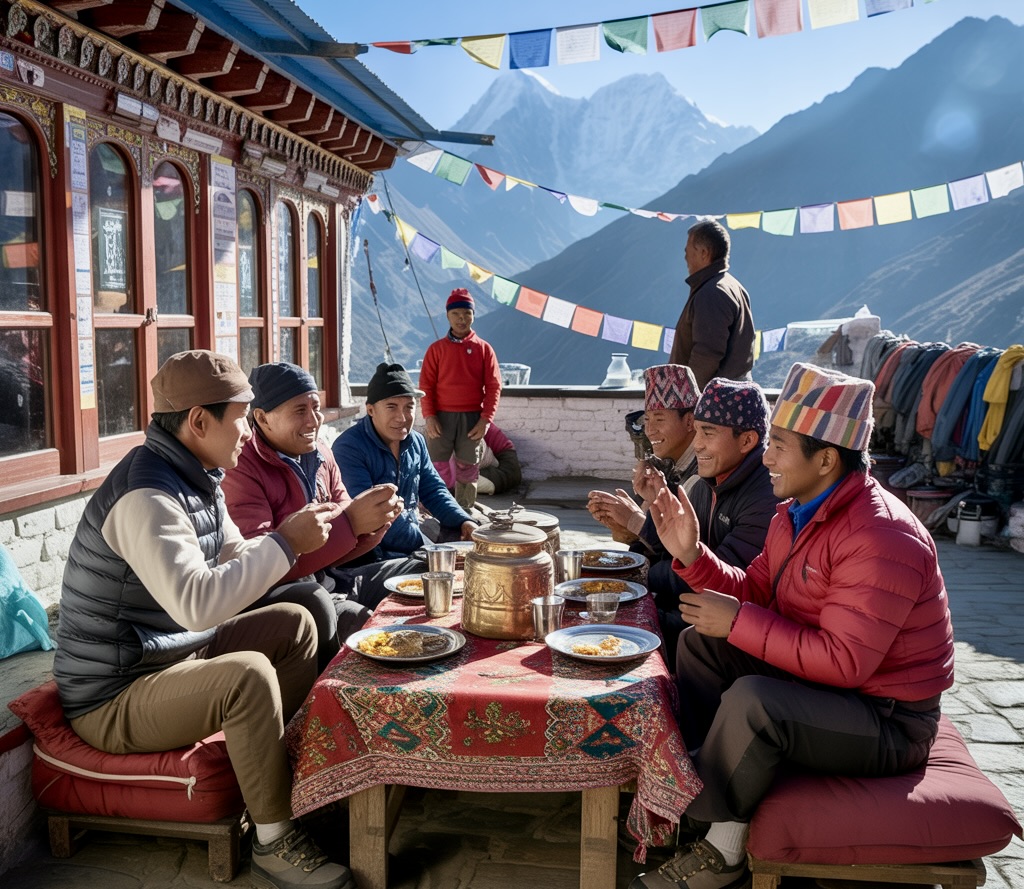
We've partnered with local conservation groups to restore high-altitude vegetation in heavily trafficked areas. Each expedition contributes to our tree-planting initiative, which has helped reforest several acres of land near popular trekking routes.
Our clients often tell us how impressed they are with our solar charging stations at base camps - just one of many ways we've reduced our carbon footprint while in the mountains.
Supporting Local Communities
The backbone of our operation? The incredible Sherpa communities and other local groups who call these mountains home. We hire locally, pay fair wages, and provide ongoing training opportunities to our team members.
A portion of every expedition fee goes directly to community development projects. So far, we've helped build three schools and a medical clinic in remote mountain villages.
We encourage authentic cultural exchanges between our clients and local communities. These interactions create meaningful connections and support traditional ways of life that have existed alongside these mountains for centuries.
Waste Management on Expeditions
Gone are the days when expeditions left trash on the mountains. We've developed a comprehensive waste management system that ensures everything we bring up comes back down - and then some.
Our "Carry Out Plus" program challenges each expedition to remove more waste than they generate. Last year alone, we removed over 2 tons of historical waste from various mountain routes.
We use biodegradable soap and eco-friendly cleaning products at all our camps. Our portable toilet systems prevent human waste contamination at high altitudes.
Climate Change Impact on Nepal's Mountains
We're witnessing climate change reshape these magnificent peaks in real time. Glaciers that once seemed eternal are retreating at alarming rates, creating new challenges for climbers and local communities alike.
Our annual glacier monitoring program tracks these changes, providing valuable data to climate researchers worldwide. The evidence is clear - warming temperatures are thinning ice routes and increasing avalanche dangers.
We've adapted our expedition timing and routes in response to these changes. Safety comes first, but we also use these adjustments as educational opportunities, helping our clients understand the very real impacts of global climate change on these magnificent mountains.
Client Success Stories
First-Time Climbers' Achievements
Nothing beats watching first-timers reach their summit dreams. We've guided hundreds of novice mountaineers who arrived in Nepal with determination and left with life-changing accomplishments.
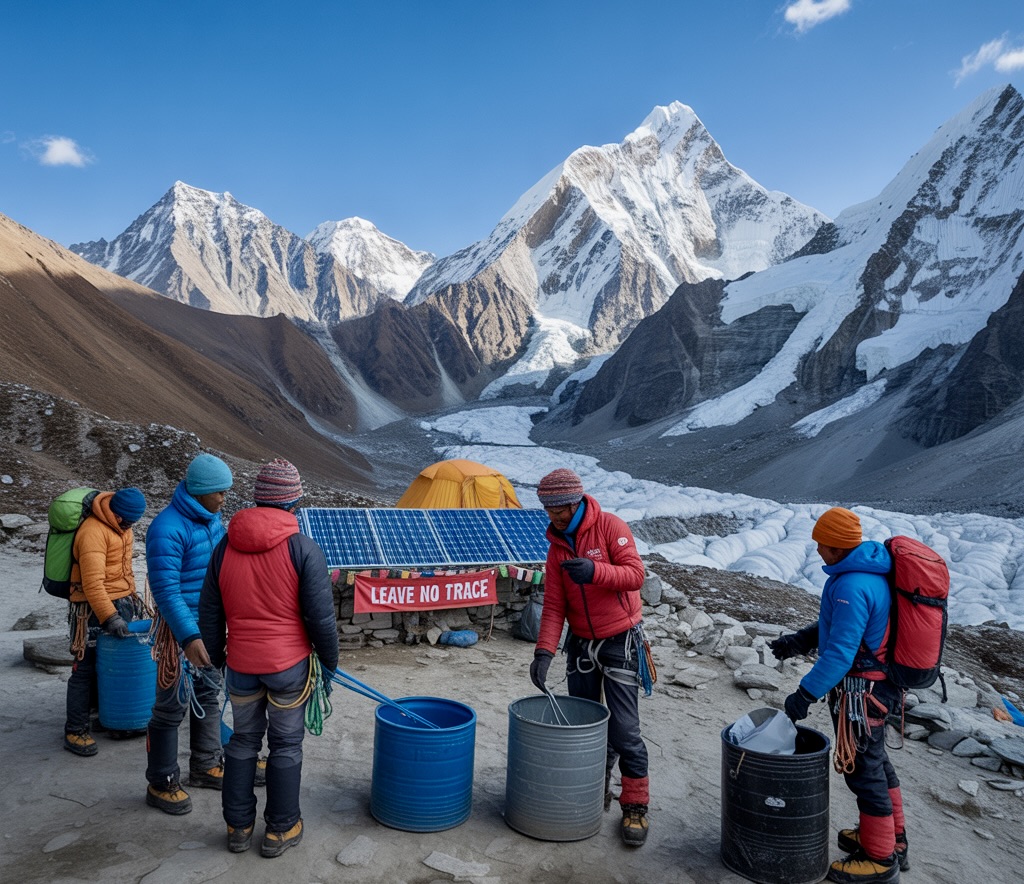
Just last season, we helped 27-year-old Emma from Australia summit Island Peak despite her having zero high-altitude experience. Her tears of joy at 6,189m reminded us why we do this work.
Our specialized training program for beginners has a 92% success rate for first summit attempts. The secret? We start preparation three months before clients even land in Kathmandu, with personalized fitness plans and equipment guidance.
Record-Breaking Expeditions
We've been part of some pretty incredible mountain feats over the years. In 2019, our team supported Mingma Sherpa as he completed the fastest oxygen-free ascent of Manaslu, shaving nearly six hours off the previous record.
In 2022, we guided the largest all-women expedition to successfully summit Annapurna I, with all 12 team members reaching the top. That's a big deal on a mountain with one of the highest fatality rates.
Our clients have set records for:
- Oldest climber to summit Ama Dablam (71 years old)
- First visually impaired climber on Lhotse
- Youngest team to complete the three-peak challenge (Everest, Lhotse, Nuptse)
- Transformation Stories from the Mountains
Mountains change people. We've witnessed incredible personal transformations that go way beyond physical achievements.
Take James, a corporate executive who joined our Everest Base Camp trek after burning out. The mountains gave him clarity he couldn't find in therapy or retreats. Two years later, he's left his high-stress job, moved to Colorado, and now runs a nonprofit helping underprivileged kids experience the outdoors.
Or Maria, who joined our Annapurna Circuit trek to mark five years cancer-free. The challenge of the trail helped her reclaim her body after years of treatment. She's now training to become a mountain guide herself.
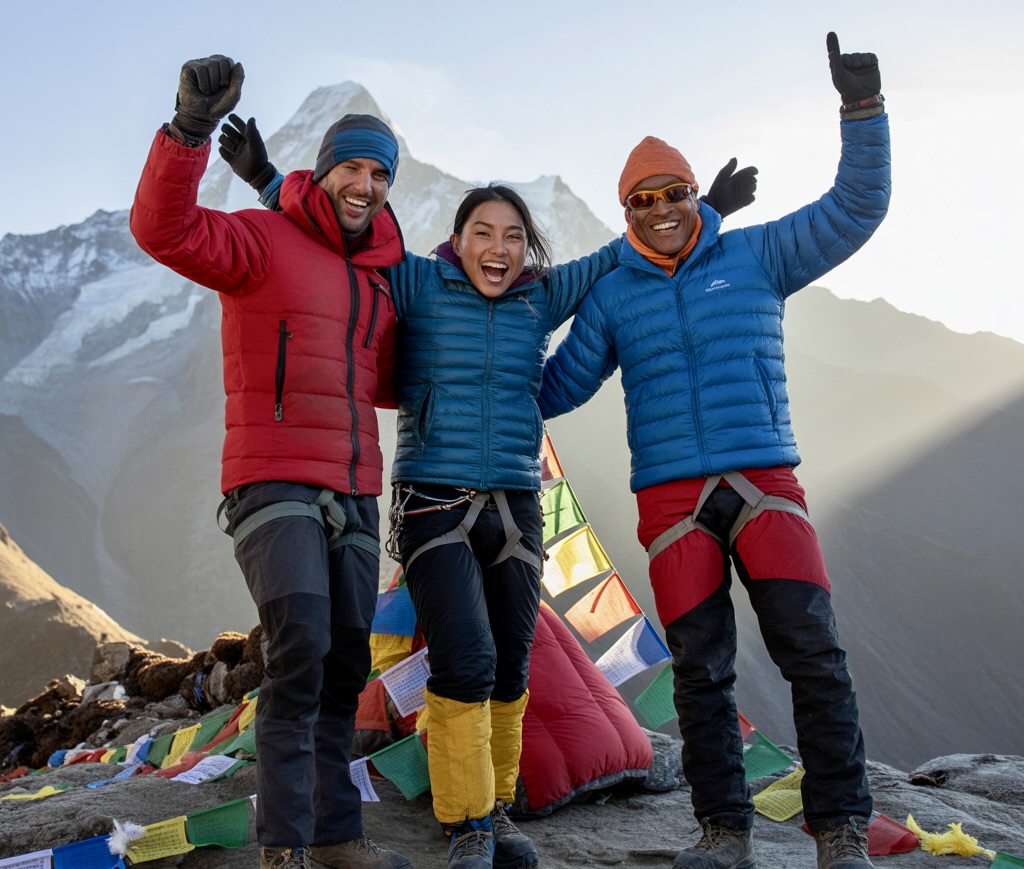
The Nepal Himalayas aren't just about conquering peaks. They're about conquering personal limits, finding new purpose, and connecting with something bigger than ourselves. We're just lucky to be part of the journey.
Mountaineering in Nepal offers an unparalleled adventure, with diverse peaks ranging from challenging 6,000-meter climbs to the ultimate mountaineering achievement - Mount Everest. Through Everest Sherpa Expeditions Pvt. Ltd., climbers receive expert guidance, comprehensive logistics support, and cultural immersion that transforms an expedition into a life-changing journey. The key to success lies in thorough preparation, understanding seasonal weather patterns, and respecting the delicate mountain ecosystem through sustainable practices.
Whether you're an experienced mountaineer or aspiring to conquer your first Himalayan peak, Nepal's mountains await your footsteps. Let Everest Sherpa Expeditions handle your permits, logistics, and safety concerns while you focus on the climb of a lifetime.
Join the ranks of our successful clients who have stood atop these majestic peaks, forever changed by their encounter with the roof of the world. Your Himalayan adventure begins with a single step - contact us today to start planning your expedition.
If you need any further information, please contact us by email: [email protected], Phone: +977- 980 195 6248 (WhatsApp).

